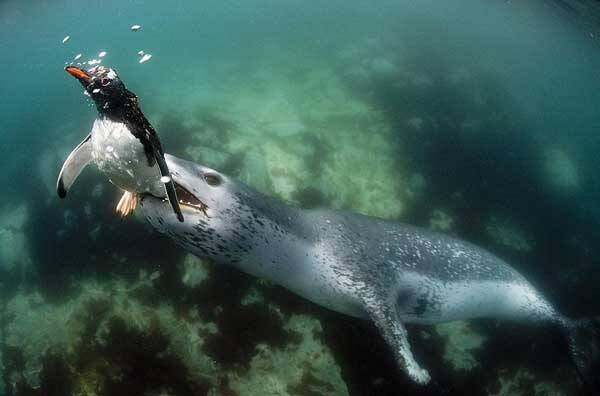Hydrurga leptonyx
IUCN
LCBasic Information
Scientific classification
- name:Hydrurga leptonyx
- Scientific Name:Hydrurga leptonyx,leopard seal,
- Outline:Carnivora
- Family:Phocaea
Vital signs
- length:2.8-3.8m
- Weight:300-500kg
- lifetime:About 26 years
Feature
It is named after the black spots on its neck that resemble leopard spots.
Distribution and Habitat
The distribution range is all over the Antarctic continental margins, as far as South America and the sub-Antarctic floating ice islands in Oceania.
Origin: Antarctica, French Southern Territories, Heard Island and McDonald Islands, South Georgia Island and South Sandwich Islands.
Wandering places: Australia, Bouvet Island, Brazil, Chile, Cook Islands, Falkland Islands (Malvinas Islands), New Zealand, Pitcairn Island, Tristan da Cunha Islands, South Africa.
Mainly inhabits Antarctic floating ice areas with icebergs and smaller glaciers. They can also be found in the ice-covered sub-Antarctic islands.
Appearance
The adult body shape is sinuous and slender. The back is dark gray and the belly is silver gray. There are bright or dark spots all over the body. The head is quite large and resembles a reptile. Nose long. The lower jaw is strong and can open and close widely. The canine teeth are well developed; the molars are complex, with three significant interlocking nodules, which facilitate screening of krill.
The sub-adult has thick and soft villi with black spots all over; it has dorsal stripes and a light gray abdomen.
Size measurement: body length ♂2.8~3.3m, ♀2.9~3.8m; maximum weight ♂300kg, ♀500kg. (Note: ♂Male; ♀Female)
Details
Leopard seal (scientific name: Hydrurga leptonyx) is also known as leopard seal in foreign languages. There are no subspecies.

Leopard seals are solitary animals that mate and raise their young in groups. Compared with other pinnipeds, they prefer warm-blooded animals. Because it moves slowly on land, hunting usually takes place in the water, and penguins and other seals will become its targets of sneak attacks. But don't be fooled by its behavior of preying on warm-blooded animals. In fact, krill is its staple food, accounting for nearly 50% of its diet, especially in winter when other food sources are scarce. Leopard seals have the behavior of seasonally preying on penguins near penguin colonies, but this is limited to a few leopard seals, and most of them still prefer to forage in the deep sea. In addition to krill, penguins and seals, their food also includes fish, squid, seabirds, crustaceans, and occasionally whale carcasses.
Leopard seals are ferocious carnivores, located at the top of the Antarctic food chain. The known natural enemy is the killer whale, but it is rarely preyed on.
Leopard seals mate in water and reproduce on ice, giving birth to one cub per litter. The female gestation period is 9 months. The breeding season is generally in late October and November. Newborn pups are about 120 cm long and can weigh more than 30 kg. The mother will raise her pups in the ice flow for the first four weeks after birth (lactation period is nearly 4 weeks). Shortly thereafter, in December to early January of the following year, the female can mate again. Males only mate and do not raise offspring.
Population statistics in the 1950s estimated that there were about 100,000 to 300,000 leopard seals in the world (Scheffer 1958). The upper limit is 220,000 to 440,000 (Laws 1984). However, such early estimates are based on very limited sample sizes and are too speculative, and are not reliable. Based on ship and aerial sightings from 1968 to 1983, researchers estimated the population in the Southern Ocean's pelagic ice belt to be about 300,000 (Erickson & Hanson 1990). From 1996 to 2001, the Antarctic Ice Seal Project (APIS) concluded that the population was 35,500 (95% CL 10,900-102,600).
Listed in the IUCN Red List: Least Concern (LC), assessed in 2015.
Listed in China's "National Key Protected Wildlife List": National Class II Protected Animals (effective December 10, 1988, all species of Pinnipeds*)
Protect wildlife and eliminate game.
Maintaining ecological balance is everyone's responsibility!








